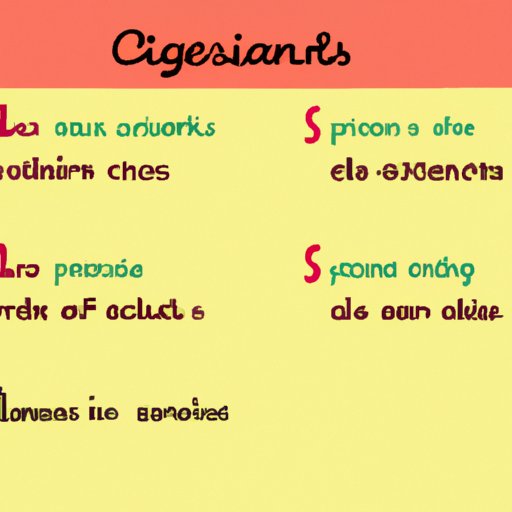Introduction
If you’re studying a new language, chances are you’ve come across dependent clauses and found them difficult to understand and use. Dependent clauses are an essential part of grammar and mastering them is important for effective communication. In this article, we’ll discuss the importance of understanding dependent clauses, common mistakes to avoid, how to identify them, and examples of their use in literature.
Importance of Understanding Dependent Clauses in Language Learning
Dependent clauses are a group of words that contain a subject and verb but do not express a complete thought. They are often used to add complexity and richness to sentences by providing additional information. Understanding dependent clauses is important because they can change the meaning of a sentence.
Using dependent clauses correctly helps to improve sentence structure, making your writing clearer and more concise. It also enables you to communicate your ideas more effectively, especially when you need to convey complex information such as in academic writing.
Common Mistakes with Dependent Clauses and How to Avoid Them
One of the most common mistakes with dependent clauses is using them incorrectly. Some writers use them as independent clauses, resulting in sentence fragments. Others place them in the wrong position within a sentence, causing confusion for the reader.
To avoid these mistakes, it’s important to understand the basic structure of a dependent clause. Typically, a dependent clause begins with a subordinating conjunction such as “if,” “because,” or “although.” They usually cannot stand alone as complete sentences and require an independent clause to form a complete thought.
Another mistake to avoid is the misuse of commas with dependent clauses. In general, if the dependent clause comes before the independent clause, you need to use a comma to separate the two. However, if the independent clause comes first, you don’t need a comma.
How to Identify Dependent Clauses in a Sentence
Dependent clauses can be tricky to identify, but there are some strategies you can use to make it easier. One way is to look for the subordinating conjunction and determine if the clause expresses a complete thought.
Another method is to look for a subject and predicate within the sentence and determine if it can stand alone as a complete sentence. If not, it’s likely a dependent clause.
For example, consider the sentence “Although he was tired, he couldn’t fall asleep.” The subordinating conjunction “although” indicates that there is a dependent clause present. The phrase “he was tired” cannot stand alone as a complete thought, making it a dependent clause.
Examples of Dependent Clauses in Literature and Why They Add Depth to Writing
Dependent clauses are commonly used in literature to create more complex sentences and add depth to the writing. John Steinbeck’s novel, “The Grapes of Wrath,” is full of examples of dependent clauses. For example, he writes, “They drove through the hot afternoon and at the end of it were tired and sweaty and caked with dust.” In this sentence, the dependent clause “and at the end of it” provides additional information about the time frame of the sentence.
Another example is from F. Scott Fitzgerald’s “The Great Gatsby,” where he writes, “The moon had risen higher, and floating in the sound was a triangle of silver scales.” The dependent clause “floating in the sound” provides important descriptive information about the setting and enhances the reader’s visualization.
Dependent clauses are a useful tool in literature because they can add richness and meaning to a sentence.
The Difference Between Dependent and Independent Clauses and Why It Matters in Writing
The difference between dependent and independent clauses is important in writing because it impacts the structure and clarity of the sentence. An independent clause can stand alone as a complete sentence, whereas a dependent clause cannot.
For example, consider the sentence “I went to the store, but I forgot my wallet.” The first part of the sentence, “I went to the store,” is an independent clause that expresses a complete thought. The second part, “but I forgot my wallet,” is a dependent clause that cannot stand alone.
Knowing the difference between the two types of clauses is important for creating well-structured sentences and avoiding errors such as run-on sentences and sentence fragments.
Conclusion
In conclusion, understanding dependent clauses is essential in language learning and effective communication. Common mistakes such as misusing commas and placing dependent clauses in the wrong position can be easily avoided by understanding their basic structure.
Identifying dependent clauses in a sentence can be made easier by looking for subordinating conjunctions and subjects and predicates that don’t stand alone.
In literature, dependent clauses can add depth and complexity to sentences. Understanding the difference between dependent and independent clauses is important for creating well-structured sentences and avoiding errors.
Practice using dependent clauses in your writing and take your language skills to the next level.
